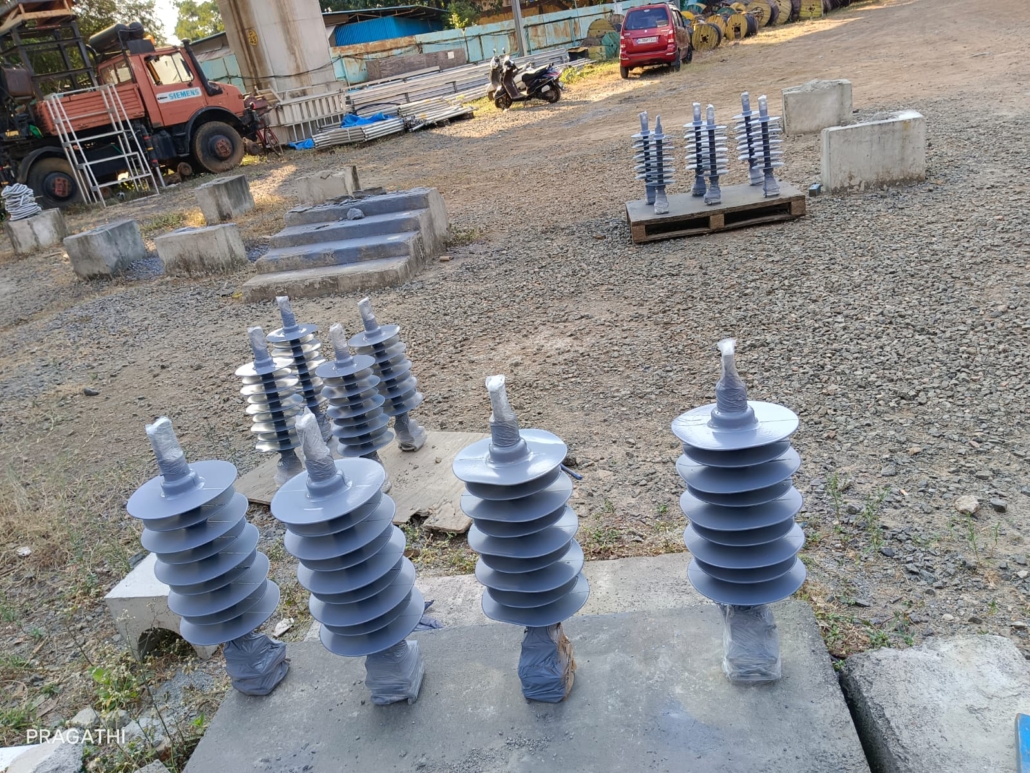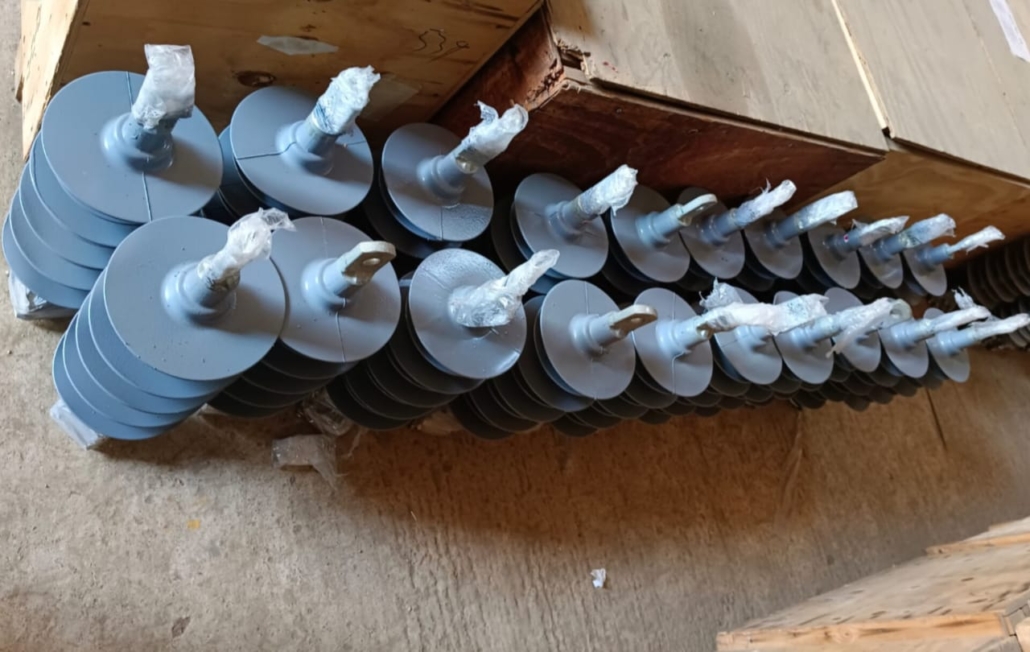- One-component RTV silicone rubber that cures to a tough high voltage insulator coating
- RTV-SIIC flexible elastomer with excellent electrical and mechanical properties.
- RTV-SIIC provide a highly hydrophobic surface for its entire life, thus limiting leakage current.
- RTV-SIIC prevents the formation of wet conductive films and therefore the risk of tracking and especially flashovers
- Resist to ageing, no peeling, no cracking

INTRODUCTION
- The room temperature vulcanizing silicone rubber coatings were used for the first time in USA over 30 years ago.
- This method is more convenient than the hand cleaning of insulators or application of vaseline or silicone pastes. The porcelain insulators with a 0.3 – 0.6 mm thin silicone coating have similar properties to composite insulators with a thicker silicone housing.
- A 0.3 mm thin silicone layer is able to transfer the hydrophobic properties to the pollution layer. As a result, the leakage current decreases and the flashover voltage increases.
- Coated Insulators not affected by UV light, corona discharge, chemical contaminants, salt, extreme temperatures or corrosive environments.
ADVANTAGES
- RTV-SIIC silicone coating on insulators, is engineered to provide a highly hydrophobic surface for its entire life, thus limiting leakage current and preventing flashovers due to insulator contamination.
- The coating is not affected by The benefits of RTV-SIIC coated Porcelain insulators are two fold – Sturdiness of Porcelain insulators and pollution performance of Silicone insulators.
- It also reduces the O&M cost on account of frequent cleaning and washing of insulators in high pollution zones. RTV-SIIC Coating the porcelain insulator with silicone rubber is one way to improve the water repellency.
- RTV-SIIC silicone coating is highly recommended for the coastal and sea shore areas.

- RTV-SIIC can be applied by brushing or dipping.
- For Spraying , Flat nozzle of 0.33 mm, 20° @ pressure output of 50 – 150 bar
- Full cure is obtained in 8 – 12 hours after coating application depending on thickness, temperatureand humidity.
SURFACE PRETREATMENT
- Proper cleaning by using water and a suitable detergentmight be sufficient.
- Insulators that show an adhering pollution, such likecement, other mineral or chemical pollution layersshould becleaned by either “cob corn-” or carbondioxide blasting.
- Any type of grease or fatty pollution is to be removedby using a suitable solvent like benzine or turpentine.
- Residual contaminants should be removed bythoroughly wiping.
- Finish the cleaning just before spraying RTV-IC withIsopropanol or an equivalent alcohol..
TECHNICAL SPECIFICATION
| S. NO | DESCRIPTION | UNIT | VALUE |
| 1 | Solid Content | % | >55 |
| 2 | Tack Free Time | Min | 15-30 |
| 3 | Cure Through | Hour | 6 |
| 4 | Hydrophobicity | Class | HC1 |
| 5 | Water Repellence | Degree | ≥ 113° |
| 6 | Volume Resistivity | Ω.cm | ≥ 11.31×1014 |
| 7 | Dielectric Constant at 50 Hz | 3.55 | |
| 8 | Flammability Test | Class | FV-0 |
| 9 | Tensile Strength | Mpa | 4.24 |
| 10 | Tear Strength | kN/m | 10.2 |
| 11 | Dielectric Strength | kV/mm | >28 |
FEATURES
- Service life Min.15 years
- Excellent hydrophobicity Behavior
- Primerless adhesion
- Very good resistance to weathering
- Outstanding tracking resistance
APPLICATIONS
Protective coating for
- Glass High Voltage Insulators
- Porcelain High Voltage Insulators
- Epoxy High Voltage Insulators
PROPERTIES
- Excellent unprimed adhesion
- One component, ready-to-use
- Easy to apply
- Sprayable or paintable

